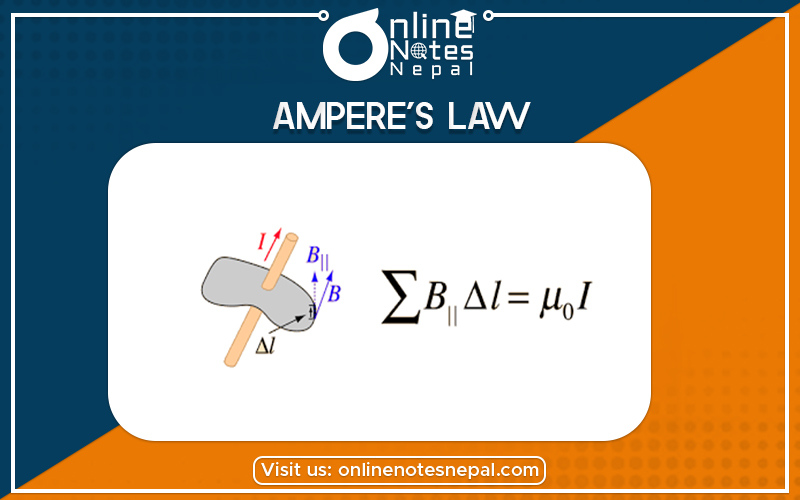Published by: Zaya
Published date: 26 Jun 2021

A useful law that relates the net magnetic field along a closed loop to the electric current passing through the loop. First discovered by André-Marie Ampère in 1826. The integral around a closed path of the component of the magnetic field tangent to the direction of the path equals µ0 times the current intercepted by the area within the path. Ampere’s law is equivalent to the Gause law in electrostatics which measures the tangential component of the magnetic field over any closed surface. Ampere’s law is an alternative method of Biot and Savart's law to measure the magnetic field due to the current-carrying conductor.

r, in a simplified scalar form,


Thus the line integral
(circulation) of the magnetic field around some arbitrary closed curve is proportional to the total current enclosed by that curve.
• In order to apply Ampère’s Law, all currents have to be steady (i.e. do not change with time)
• Only currents crossing the area inside the path are taken into account and have some
contribution to the magnetic field
• Currents have to be taken with their algebraic signs (those going “out” of the surface are positive, those going “in” are negative)- use right hand’s rule to determine directions and signs
• The total magnetic circulation is zero only in the following cases:
-the enclosed net current is zero
-the magnetic field is normal to the selected path at any point
-the magnetic field is zero
• Ampère’s Law can be useful when calculating magnetic fields of current distributions with a high degree of symmetry (similar to symmetrical charge distributions in the case of Gauss’ Law)